The Musical Instruments of Traditional Filipino Music
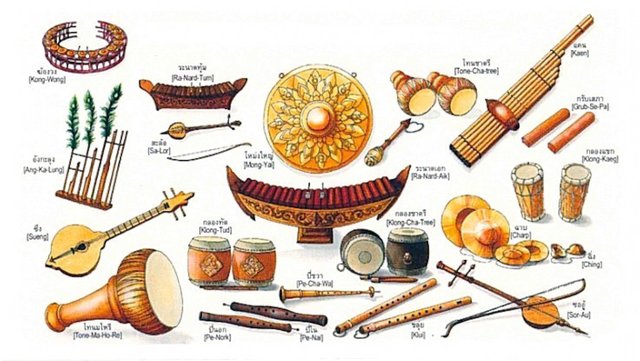
Image Source
Most prehispanic instruments are identified with those in Southeast Asia, South China, and Oceania: gong rings, bamboo aerophones (blown instruments), drums, zithers, and two-stringed flutes, bamboo xylophones, and other wooden and metal idiophones. The harp, guitar, and other culled strings reenacted metal band instruments like the musikong bumbong; transverse woodwinds, and violin-sort instruments were embraced or adjusted from Western instruments. The Philippine renditions have a profoundly relative tuning framework mostly because of the absence of standard sizes and an incredible assortment of material sources. Western-received instruments are tuned diatonically in view of the Western equivalent demeanor.
The accompanyings are illustrative instruments and instrument sorts as indicated by territory:
In the Cordillera highlands are found:
- Flat gongs (Kalinga gangsa, Ifugao angha, Ibaloy kalsa and pinsak)
- Polychordal zither (Bontoc kolitong, Kalingakulibit)
- Lip-valley flute (Kalinga paldong, Ibaloy taladi)
- Fipple flute (Kalinga olimong, Bontoc teptepew)
- Pipe flutes in ensemble (Kalinga saggeypo)
- Singlereed pipe (Ifugao hupip, Kalinga pattotot)
- Nose flute (Isneg baliing, Bontoc kaleleng, Ifugao ungiyung, Kalinga tungali)
- Metal jew’s harp (Bontoc awedeng, Ibaloy koding, Kalinga giwong)
- Conical drum (Ifugao libbit, Ibaloy kimbal and sulibao)
- Bamboo and board zither (Ifugao ayudding and tadcheng, Ibaloy kaltsang)
- Half-tube zither (Itneg patanggu, Kalinga patang-ug)
- Stamping tubes (Kalinga tongatong, Isneg tungtung)
- Bamboo buzzer (Bontoc avakkao, Isneg bungkaka, Kalinga ubbeng)
- Yoke-beam (Ifugao bangibang)
- Xylophone blades (Kalinga patatag, Isneg talonggating)
- Violin (Kalinga gologod, Isneg nabil)
In the central west highlands are found:
- Bossed gong (Palawan and Tagbanua babandil)
- Wide-rimmed bossed gong (Palawan agung)
- Jew’s harp (Palawan and Tagbanua aroding, Hanunuo kinaban)
- Ring flute (Palawan beberek)
- Transverse flute (Hanunuo lantuy, Cuyunon and Tagbanua tipanu)
- Double-headed drum (Tagbanua and Cuyunon gimbal, tambor)
- Two-stringed lute (Palawan kusyapi)
- Three-stringed fiddle (Buhid gitgit)
- Bean-pod rattle (Hanunuo buray dipay)
- Digging pole (Cuyunon palakupakan)
- Shell trumpet (Hanunuo budyong, Cuyunon taburi)
- Percussion beams (Tagbanua sabagan)
- Percussion sticks (Hanunuo kalutang)
In the Mindanao highlands are used:
- Small bossed gongs laid in a row (Tboli klintang, Bilaan and Subanon kulintang)
- Small hanging bossed gongs (Manobo kulintang)
- Small narrow-rimmed bossed gong (Tiruray agung)
- Suspended bossed gong (Mansaka bubundi)
- Several hanging bossed gongs (Bagobo lumming tagunggua)
- Wide-rimmed bossed gong (Bilaan, Subanon, Tboli, Kalagan, Bagobo and - Manobo agung, Bilaan salmagi)
- Jew’s harp (Tiruray kubing, Bagobo kumbing, Bilaan lideng)
- Lip-valley flute (Mandaya bunabon, Bilaan palundag, Subanon tanggab and tulali)
- Ring flute (Subanon glantuy, Bukidnon kinsi, Agusanon-Manobo saguysuy, - Bilaan and Tiruray suling)
- One-stringed fiddle (Bilaan aduwagay, Agusanon-Manobo kugot, Tboli duwagey)
- Two-stringed lute (Mansaka binarig, Bilaan faglong, Tboli hagelong, Mansaka and Manobo kudlung)
- Polychordal zither (Bagobo saluroy)
- Digging pole (Subanon buhahay and taha-taha)
- Shell trumpet (Mandaya lungga)
- Log drum (Bilaan amdel, Kalagan and Tagakaolo edel, Bagobo odol)
- Percussion beams (Tboli kalutang, Tiruray lontang, Manobo lutang)
- Bamboo slit drum (Mansaka koratong, Agusanon-Manobo kagii)
Among the Aeta groups are found:
- Flat gong (Aeta Magbukun palay)
- Bamboo jew’s harp (Aeta and Dumagat kulibaw)
- Lip-valley flute (Aeta Magbukun banghi, Ata tiwali)
- Ring flute (Ata lantuy)
- Musical bow (Aeta Magkunana bayi, Agta and Dumagat palat)
- Two-stringed musical bow (Agta surimbao, Kabihug curimbao)
- One-stringed fiddle (Ata kagot)
- Parallel-stringed tube zither (Aeta Magkunana tabebeng)
- Digging pole (Aeta Magkunana talibengan)
Among Islamized groups are used:
- Small bossed gongs laid in a row (Maguindanao, Maranao, Sama and Jama Mapun kulintang, Yakan kwintangan)
- Suspended bossed gong (Maguindanao and Maranao babandir)
- Narrow-rimmed, suspended bossed gongs (Maguindanao gandingan)
- Wide-rimmed bossed gong (Maranao, Maguindanao, Badjao, and Jama Mapun agung, Jama Mapun, Sama and Tausug buwa, tunggalan, and pulakan)
- Bamboo jew’s harp (Maranao and Sama kobing, Tausug and Yakan kulaing, Maguindanao kubing)
- Lip-valley flute (Maguindanao palendag)
- Ring flute (Maguindanao, Sama, Tausug, and Yakan suling)
- Two-stringed lute (Maguindanao and Maranao kutyapi)
- European-type violin (Sama, Tausug, and Badjao biyula)
- Bamboo slit drum (Maranao bentong agong, Maguindanao tamlang agong, Yakan tagutok)
- Bamboo scraper (Maguindanao kagul, Maranao garakot)
- Goblet-shaped drum (Maguindanao and Maranao dabakan)
- Double-headed cylindrical drum (Tausug, Sama, Badjao, Maranao and Maguindanao gandang and tambul)
- Bamboo clapper (Yakan daluppal)
- Percussion beams (Yakan kwintangan kayu, Maranao lumbang, Maguindanao luntang)
- Log drum (Yakan, Tausug, Badjao tuntungan)
- Bamboo xylophone (Yakan agung gabbang, gabbang, and kwintangan batakan, Sama gambang)
Among rural Christian communities are found instruments like:
- Goblet-shaped drum (Tagalog Batangas tugtugan)
- Double-headed cylindrical drum (Cebuano bombo, Ilongo tambor)
- Percussion sticks (Tagalog Marinduque kalutang)
- Bamboo clappers (Tagalog Batangas kalaste)
- Bamboo tube drum (Tagalog Batangas kalatong)
- European-type violin (Ilongo and Cebuano biyulin)
- Diatonic harp (Ilocano and Tagalog arpa)
- Transverse flute (Waray plahuta, Ilongo and Cebuano flauta)
- Bamboo jew’s harp (Tagalog barimbaw)
- Imitation of brass-band instruments (Tagalog musikong bumbong)
- Plucked-instrument ensemble (rondalla)
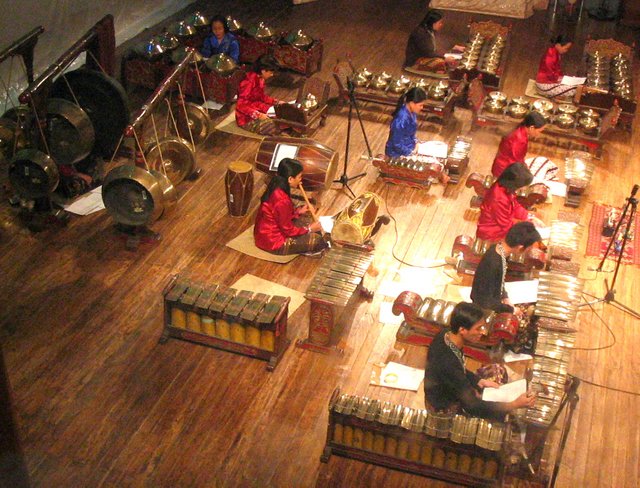
Image Source
Some instruments are more across the board than others, and some are played just in specific regions. The bamboo jew's harp, for instance, is discovered all around, while the melodic bow is restricted to the Aeta societies. The lip-valley woodwind and the polychordal zithers are found in northern Luzon and the Mindanao good countries. Level gongs prevail in northern Luzon, while the bossed gongs are far reaching in Mindanao, Sulu, and Palawan. Different instruments, for example, the half-tube zither (ayudding) of the Ifugao and the halted pipe troupe (saggeypo) of the Kalinga, are particular to some ethnolinguistic gatherings.
The instruments are played either in troupe or solo. As a rule, outfits perform amid group occasions, for example, feasts (cañao, peshit), weddings, and entombments. In the Cordillera good countries and northern Luzon, troupes comprise of groupings of one kind of instrument, for example, the Kalinga and Bontoc gangsa gathering, or the saggeypo and bangibang outfit. The sulibao outfit of the Ibaloy, be that as it may, comprises of two level gongs (kalsa and pinsak), two cone shaped drums (sulibao and kimbal), and a couple of metal bars (palas). There is an assortment of heterogenous blends of instruments and instrumental timbres in the Mindanao troupes. The Yakan tagunggo outfit comprises basically of a metal kwintangan, gabbang, an arrangement of three agung, and broke bamboo opening drum (gandang). The Maguindanao kulintangan is made out of a kulintang, babandir, four gandingan, a couple of agung, and a dabakan.
In the rustic Christian people group, instrumental troupes other than the metal band, rondalla, and other society gatherings, for example, the musikong bumbong, pangkat kawayan, and the cumbanchero, shift in number of individuals and instrumentation. A gathering may comprise of a clarinet, violin, bumbong, bandurria, banjo, guitar, and bajo de uñas (nearby form of a twofold bass). The five-stringed guitar is a typical going with and symphonious instrument. The cumbanchero prospered in the 1950s as a branch of the notoriety of the "Lord of Rhumba" Xavier Cugat. The instrumentation of the cumbanchero comprised of a harmonica (the primary song instrument), maracas, claves, guitar, bongos, conga drum, jawbone, guiro, guitar, and one-stringed bass and libbed from a war surplus versatile fuel tank. The accordion was additionally included when accessible. Indigenous and embraced instruments which are utilized for solo or little gathering exhibitions incorporate the diverse woodwinds, jew's harp, zither, xylophone, flute, kulintang, harp, bandurria, and the guitar.
Philippine melodic instruments and their collections are remarkable in their level of indigeneity and hybridization of instruments and music. Indigenous instruments used to play indigenous music are generally metallophones and idiophones, and in addition bamboo chordophones and aerophones. Asian-inferred instruments tuned to Western demeanor and used to play music in the Western phrase are the blown bamboo tubes (bumbong), angklung, and tipanu (Cuyunon woodwind). Westernadapted instruments used to play Western music are the guitar and other culled strings (bandurria, octavina, commend, mandola, bajo de uñas), and metal band and symphony instruments. Western-adjusted instruments used to play Western music are those found in the musikong bumbong and cumbanchero gatherings.
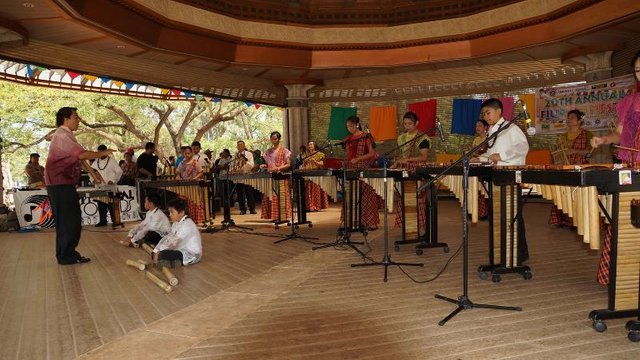
Image Source
Western adapted instruments used to play non-Western music are the Hanunuo gitgit, Tausug biyula, and Aeta biolin.The Vocal Genres In most tribal groups that have no non specific name for vocal music (or "music" so far as that is concerned), every vocal classification bears a particular name, normally alluding to the melodic and printed substance as well as to its social part. The vocal collection comprises of an awesome assortment of sorts, structures, styles, uses, and capacities. While instrumental music is for the most part, performed on various events (with the exception of the bangibang music of the Ifugao which is heard only at the himong custom and the Yakan kwintangan kayu or daluppal music played for rural purposes), vocal music is capacity particular.
Melodies allude to specific events or exercises and express individual sentiments and feelings. Numerous melodies are as particular as the Ilongot dinaweg, sung when catching a wild pig, and the amamet, sung when chasing a pig with bow and bolt, and the Manobo sinda-ay, a wedding serenade sung before welcoming the prepare's gathering to go into the lady of the hour's home. Melody sorts are named contrastingly relying upon their substance. The Kalinga children's song is an owiwi when it recounts a youngster's life or a dagdagqay when it foresees the infant's future. A few melodies are general, for example, the Kalinga salidummay, Tagalog kanta or awit, Mandaya bayok, Pangasinan cancionan, Manobo limbay, and numbers, for example, the Ilongo composo and the Ibaloy ta-miya. Vocal kinds might be arranged by their capacities. The life cycle tunes are bedtime songs, tunes identified with birth, romance, wedding ceremonies, and mourns for the dead.
Bedtime songs are as general as the langan bata-bata of the Tausug and bua of the Subanon, or as particular as the Kalinga oppiya which is sung while supporting a youngster on the vocalist's lower leg, and the kawayanna that goes with the wearing of a kid's first jewelry (Maceda 1972:518). Love and romance tunes can be serenades like the Tagalog and Cebuano harana; melody banters about like the Kankanay dai-eng, Batak inanen, Tagakaolo estijaro, and Cebuano balitaw which is joined by move; spells, for example, the Manobo kambong; or articulations of mystery love like the Bontoc chag-ay.
The distinctive periods of the marriage rituals have relating tunes: the Manobo antang, an intermediary's tune; the Pangasinan abuten, a two part harmony of relative and girl in-law; the Tausug tarasul, a melody of guidance to the married couple; and the Ilocano dal-parcel, a tune wrangle between the couple's folks. The Kalinga donop, which alludes to the marriage appropriate, might be as the tamuyong or request for profound gift; dango or articulation of appreciation; oggayam or welcome and counsel to the love birds; and salidummay and dangdang-ay or adore tunes for excitement.
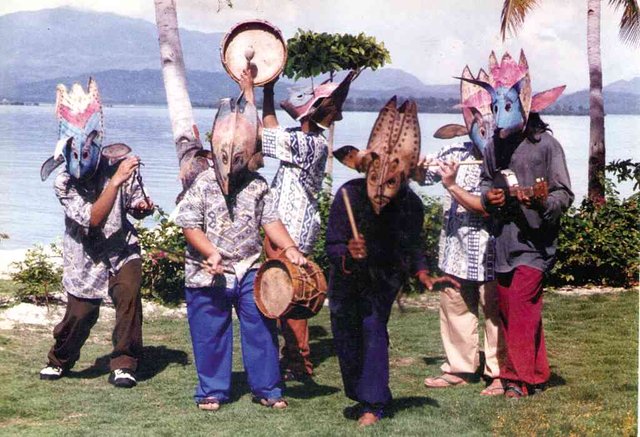
Image Source
Tunes for the dead can be as particular as the Bontoc didiyaw and the Waray pangade han trisahio sung for a dead youngster or the Matigsalug balow for a dead spouse. A few melodies are sung amid wakes: iring-iring of the Manobo and the belasyon of the Ilongo; laments, for example, the Ilocano compost aw and the Isneg sangsangit; and regrets like the Manobo ulaging and the Ilongo panaghoy. Work tunes go with the diverse periods of the horticultural cycle, angling, chasing, social event of kindling, and so on.
Illustrations are the Aeta dururu, the general term for work tune; the Subanon gagonapu, alluding to chasing or angling; the Ata panubad, a petition before planting; the balatuking, reap tune of the Manobo; the sowe-ey, rice-beating tune of the Bontoc; the Kalinga daku-far off, for chasing bats; the Ilongot dinaweg for getting wild pig, and the dandannag and owayat, sung while gathering kindling; and the Batak didayu for wine making.
There is a vocal collection for the religious cycles of Islamic and Christian people group. In indigenous animist societies, the soul world is generally incorporated in the vast majority of the life-cycle and word related exercises and customs, particularly those led or driven by seniors, ministers, and shamans. On these events, there is just a dubious refinement amongst religious and mainstream expressions. Islamic customs incorporate the Salathul Juma (Friday supplication), the Tarawe (petition amid the Ramadan), and the Maranao dekir or Maguindanao dikil (a lament sung on the most recent night of the vigil). A broad collection of vocal music praises significant religious times of the Christian formal year: Christmas, Lent, Easter, May Festival, All Saints' Day, and the devour days of holy people. Amid Christmas, Joseph and Mary's look for cabin is reenacted in the panunuluyan; the villancicos and the Cebuano daigon are the conventional tunes sung inside and outside the holy places amid the whole season.
The pasyon, which is droned amid the pabasa utilizing conventional tunes like the awit and tagulaylay, is the melodic centerpiece of the Lenten season. The pasyon likewise gives the melodic material to the energy play or sinakulo. The "Regina Coeli, Laetare" (Queen of Heaven, Rejoice), is sung amid the salubong, an exhibition delineating the initially meeting of the risen Christ and the Virgin Mary. Amid the santacruzan in May, the "Dios te ointment" is sung amid the parades. The Batangas Tagalog play out the subli. May parade melodies in Bicol incorporate the aurora, kristiyanong turog, dotok, gozo, and dalit.
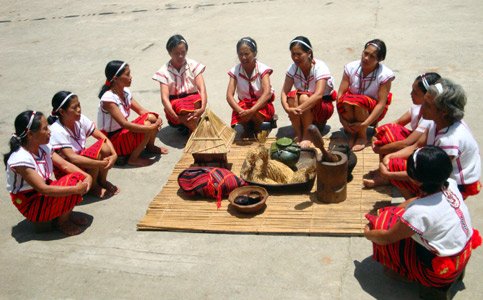
Image Source
There are customs in which vocal music assumes a noteworthy part: curing services, for example, the Batak and Subanon diwata, Bontoc kapya, Ibaloy angba, and Ilongot dawak; supplication ceremonies and offering of yield, for example, the Kankanay alasan and Tagalog sanghiyang; the Ibaloy bendiyan to praise triumph in scouting or tribal war like the Kalinga kayuyugan and Manobo pamansag; peace agreements, which are commended with the oggayam, ullalim, and dango; and thanksgiving rituals like the Manobo pangangando.
There are youngsters' tunes, melodies for no particular reason, similar to the Subanon bongotat which is about seniority and falling hair, drinking tunes, welcoming tunes, and goodbye tunes. Philippine oral writing is additionally rich in expanded account structures, for example, the people stories and the metrical sentiments. The sagas express not just the recorded and scholarly parts of a social convention additionally the general population's convictions and the whole arrangement of social qualities. Some illustrative Philippine stories are the Bilaan Aflulok, the Ifugao Hudhud, the Ilocano Lam-ang, the Sulod Hinilawod, the Palawan Kudaman, the Maguindanao Rajah Indarapatra, the Maranao Darangen, the Manobo Tuwaang, Agyu and Ulahingan, the Mansaka Manggob, and the Subanon Gambatutu. A few stories are shared by at least two social gatherings, for example, the Rajah Indarapatra, known to both the Maguindanao and the Maranao.
In most Christian people group, the legends have been supplanted by metrical sentiments presented by the Spanish colonizers. The prominence of metrical sentiments topped in the nineteenth and mid-twentieth hundreds of years. In spite of the fact that the stories were initially composed, these have been orally transmitted as the years progressed, accepting diverse forms all the while. The awit and korido, varying just in wonderful structures and style of interpretation, are stories of bravery populated by European knights, rulers, and princesses, and in light of Biblical stories and Greco-Roman writing. Discussed or articulated on previous melodic formulae, for example, the Tagalog awit, metrical sentiments are a built up custom among the Tagalog, Pampango, Ilocano, Cebuano, Bicol, and Ilongo. Philippine metrical sentiment writing incorporates both adjusted works like Erastro, Floristo at Blanca Flor (Floristo and Blanca Flor), Adriana at Pantinople (Adriana and Pantinople), Mariang Alimango (Maria the Crab) after "Cinderella," and unique works like Don Juan Tiños, Florante at Laura (Florante and Laura), and Ibong (Adarna Bird). The stories of the metrical sentiments have additionally given material to the komedya, a well known theater frame in the nineteenth century.

Image Source
It was very interesting! I like to read anout different cultures. Thank you for your work! Follow you if you don't mind :)
Downvoting a post can decrease pending rewards and make it less visible. Common reasons:
Submit
Thanks. I have posted a lot about the cultures of my country and I will be posting more.
Downvoting a post can decrease pending rewards and make it less visible. Common reasons:
Submit
Good post! upvoted And resteemed =)
Follow me I always follow back.
Downvoting a post can decrease pending rewards and make it less visible. Common reasons:
Submit
Thanks. Followed
Downvoting a post can decrease pending rewards and make it less visible. Common reasons:
Submit
Gusto ko yan :)
Downvoting a post can decrease pending rewards and make it less visible. Common reasons:
Submit
I learned something new thanks to your post @juvyjabian I would never have imagined a nose flute existing. Pretty cool.
full steem ahead!
@streetstyle
Downvoting a post can decrease pending rewards and make it less visible. Common reasons:
Submit
Glad that you enjoy my post. Thanks
Downvoting a post can decrease pending rewards and make it less visible. Common reasons:
Submit
Thanks for the post but sad to say that few people actually know how to play those now a days. Hope someone will endeavor to revive the cultural and traditional filipino music and dances.
Downvoting a post can decrease pending rewards and make it less visible. Common reasons:
Submit